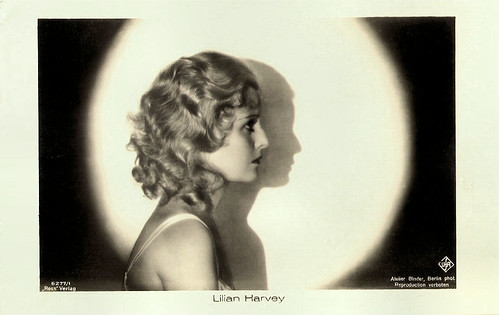
German postcard by Ross Verlag, no. 6277/1, 1931-1932. Photo: Atelier Binder, Berlin / Ufa.
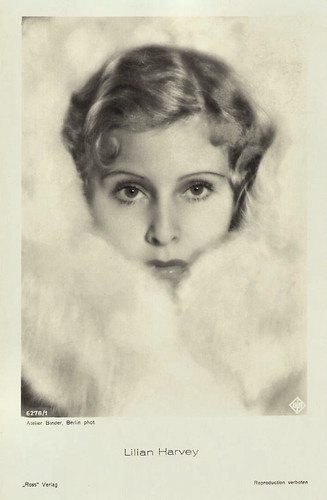
German postcard by Ross Verlag, no. 6278/1, 1931-1932. Photo: Atelier Binder / Ufa.
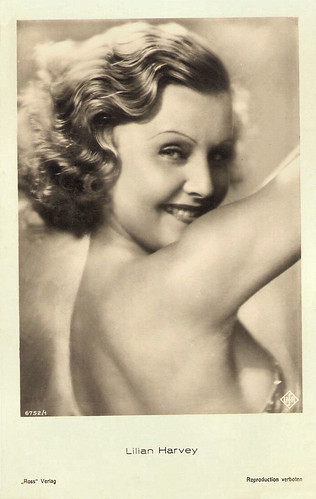
German postcard by Ross Verlag, no. 6752/1, 1931-1932. Photo: Ufa.
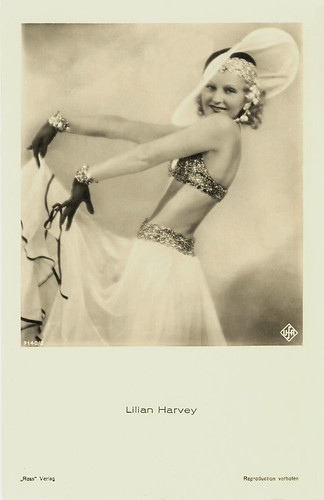
German postcard by Ross Verlag, no. 7140/2, 1932-1933. Photo: Ufa.
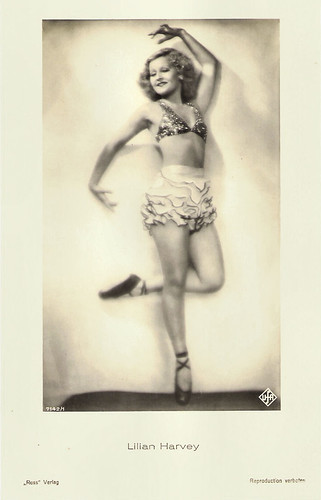
German postcard by Ross Verlag, no. 7142/1, 1932-1933. Photo: Ufa. Collection: Geoffrey Donaldson Institute.

German postcard by Ross Verlag, no. 7682/1, 1932-1933. Photo: Fox.

Italian postcard by Rizzoli & C., Milano, 1938. Photo: 20th Century Fox. Harvey acted in a handful of films at Fox in 1933.
Hollywood
Before going to Hollywood, Lilian Harvey first appeared in the British romance The Only Girl (Friedrich Hollaender, 1934) with Charles Boyer.
Her Hollywood debut for 20th Century Fox was the film operetta My Lips Betray (John G. Blystone, 1933) with John Boles. Of this film now only rests an incomplete print. It was held back in favour of Harvey's second outing, My Weakness (David Butler, 1933) with Lew Ayres, which, despite its title, was considered a stronger effort.
At AllMovie, Hal Erickson writes: "Clearly inspired by the Lubitsch and Clair musical semi-fantasies then in vogue, My Weakness is replete with rhyming dialogue, talking animals, and even a singing statue of Auguste Rodin's The Thinker. The Buddy G. DeSylva-Leo Robin-Richard Whiting score is largely unmemorable save for 'Gather Lip Rouge While You May', which deserves a gold star for the title alone."
Her last musical for Fox was I Am Suzanne (Rowland V. Lee, 1933). Hal Erickson writes about this film: "International musical-comedy favourite Lillian Harvey is as delightful as ever in the bizarre romantic tunefest I Am Suzanne. In a plotline curiously similar to the much-later Lili, Harvey is cast as Suzanne, a crippled dancer in love with young, self-involved puppeteer Tony (Gene Raymond), who finds it easier to talk to his wooden-headed creations than to human beings. (...) Rowland V. Lee's direction of I Am Suzanne is almost as Germanically symbolic as his later handling of Universal's Tower of London and Son of Frankenstein."
Then she appeared for Columbia Pictures in the romantic comedy Let's Live Tonight (Victor Schertzinger, 1935), co-starring Tullio Carminati. In 1935 she returned to Europe. In Great Britain, she starred in the musical Invitation to the Waltz (Paul Merzbach, 1935), and then she returned to Germany to be with her lover, director Paul Martin.
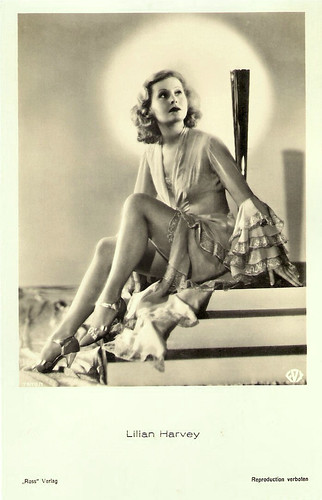
German postcard by Ross Verlag, no. 7679/1, 1932-1933. Photo: Fox. Publicity still for My Lips Betray (John G. Blystone, 1933).
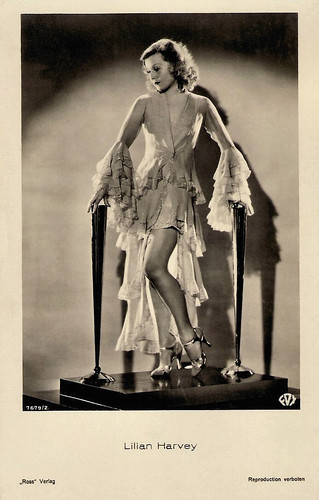
German postcard by Ross Verlag, no. 7679/2, 1932-1933. Photo: Fox. Publicity still for My Lips Betray (John G. Blystone, 1933).
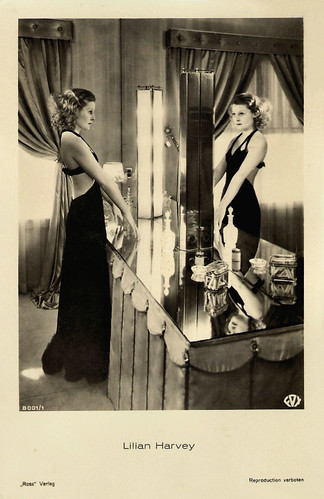
German postcard by Ross Verlag, no. 8001/1, 1933-1934. Photo: Fox.

German postcard by Ross Verlag, no. 8000/1, 1933-1934. Photo: Fox.
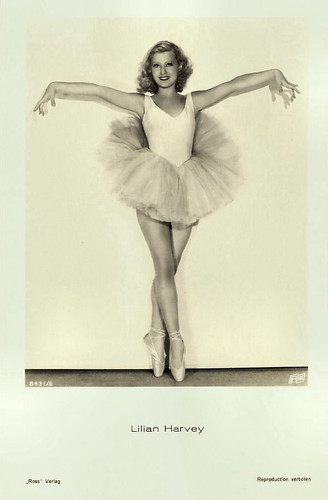
German postcard by Ross Verlag, no. 8431/2, 1933-1934. Photo: Fox. Publicity still for I am Suzanne! (Rowland V. Lee, 1933).
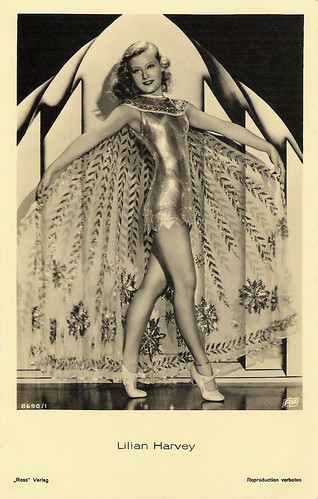
German postcard by Ross Verlag, no. 8690/1, 1933-1934. Photo: Fox.
Gestapo
Lilian Harvey returned to the Ufa studios in Schwarze Rosen/Black Roses (Paul Martin, 1935). It was again filmed in three languages: German, French and English.
But not everything was the same as before her years in Hollywood. In her absence, the Nazi regime had come to power in Germany and the Gestapo found out that she still made invitations to her Jewish colleagues.
She came under observation, but she nevertheless made successful Ufa films such as the screwball comedy Glückskinder/Lucky Kids (Paul Martin, 1936) with Willy Fritsch.
She also appeared in the historical musical Fanny Eisler (Paul Martin, 1937) with Willy Birgel, and the comedy Frau am Steuer/Woman at the Wheel (Paul Martin, 1939) again with Willy Fritsch.
When Harvey helped the choreographer Jens Keith to escape to Switzerland this led to an interrogation by the Gestapo. A great part of her fortune that was invested in real estate was confiscated by the Nazis, and Harvey left Germany.
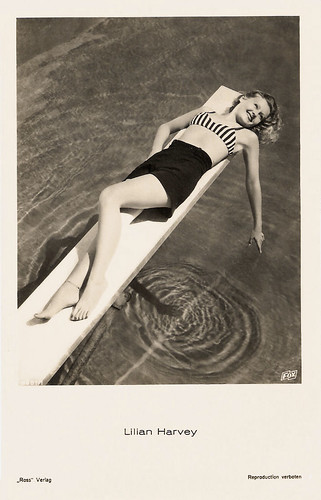
German postcard by Ross Verlag, no. 8581/1, 1933-1934. Photo: Fox (20th Century Fox).

German postcard by Ross Verlag, no. 8581/3, 1933-1934. Photo: Fox (20th Century Fox).
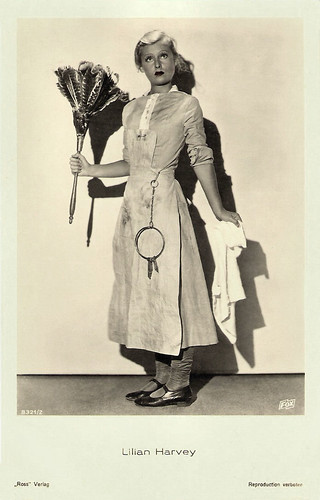
German postcard by Ross Verlag, no. 8321/2, 1933-1934. Photo: Fox.

German postcard by Ross Verlag, no. 191/3. Photo: Fox. Lilian Harvey and El Brendel in the musical comedy My Lips Betray/Meine Lippen lügen nicht (John G. Blystone, 1933).

German postcard by Ross Verlag, no. 8692/1, 1933-1934. Photo: Fox.

German postcard by Ross Verlag, no. 8227/1, 1933-1934. Photo: Fox.
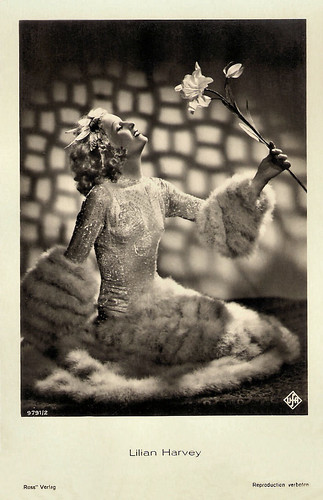
German postcard by Ross Verlag, no. 9791/2,1934-1935. Photo: Ufa.
Volunteer nurse
In France, Lilian Harvey made her last two films, Sérénade/Schubert's Serenade (Jean Boyer, 1940) with Bernard Lancret as composer Franz Schubert, and Miquette (Jean Boyer, 1940) with Lucien Baroux.
After the occupation of southern France, she emigrated again, now to Los Angeles to work as a volunteer nurse. Since she had done performances for French troop care the Nazi regime withdraw her German citizenship in 1943.
Her former directors and co-workers like Michael Curtiz and Billy Wilder remained social contacts, but her stigma of having been Ufa's biggest star kept her from reigniting her film career. After the war, Harvey returned to Paris. In the following years, she travelled as a singer through Scandinavia and Egypt. In 1949, she returned to Germany and performed on stage.
From 1953 to 1957, she was married to Danish theatre agent Hartvig Valeur-Larsen. She received war reparations in the early 1960s, and she lived on the Riviera. Eventually, her secretary Else-Pitty Wirth became her partner. Lilian Harvey died of liver failure in 1968 in Juan-les-Pins, France.
In 2009 Quentin Tarantino revived one of Lilian Harvey's greatest songs in his film Inglourious Basterds (2009). The hilarious 'Ich wollt' ich wär ein Huhn' (I would like to be a chicken) written by Hans Fritz Beckmann and Peter Kreuder, can be heard on the soundtrack of the film. Harvey sang it with Willy Fritsch in Glückskinder/Lucky Kids (Paul Martin, 1936).

German/British postcard by Eur. Woolworth, no. 4233. Photo: Wengerow & Fulda. Possibly this card refers to Harvey's trip to London to act in Invitation to the Waltz (Paul Merzbach, 1935), her only British film.

German postcard by Ross Verlag, no. 9602/1, 1935-1936. Photo: British International Pictures (B.I.P.). Publicity still for the British film Invitation to the Waltz (Paul Merzbach, 1935).

German postcard by Ross Verlag, no. 9274/1, 1935-1936. Photo: Ufa. Willy Fritsch welcomes Lilian Harvey back in Germany.
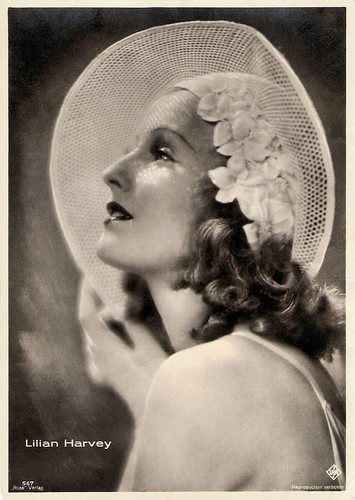
German postcard by Ross Verlag, no. 567. Photo: Ufa.
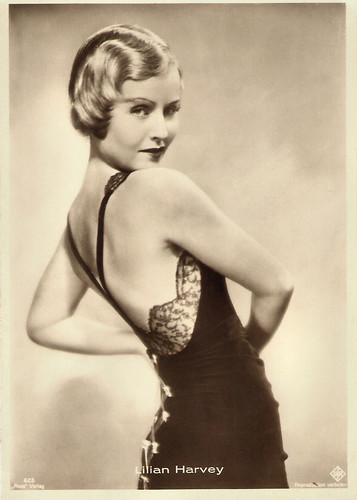
German postcard by Ross Verlag, no. 628. Photo: Ufa. Collection: Geoffrey Donaldson Institute.
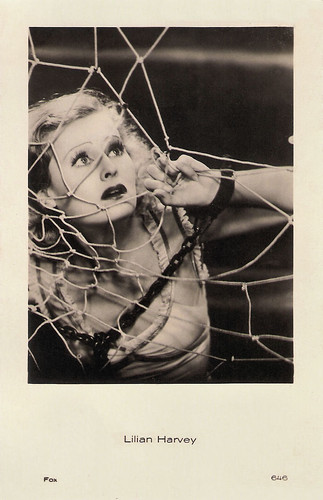
Dutch postcard, no. 646. Photo: Fox.
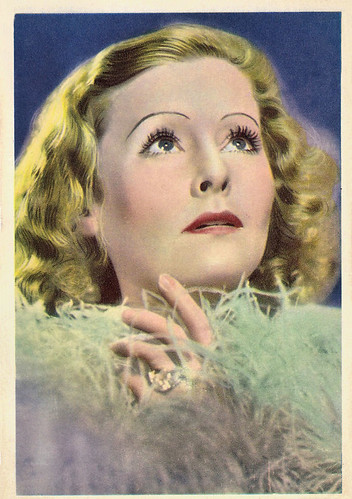
British collectors card by Godfrey Phillips and Associated Companies' Cigarettes, no. 20. Photo: British International Pictures (B.I.P.) Publicity still for Invitation to the Waltz (Paul Merzbach, 1935).
Lilian Harvey sings Guten Tag, Liebes Glück (1939) with images of Schwarze Rosen (Paul Martin, 1935). Source: Raiwons (YouTube).
Clip of Ich wollt' ich wär' ein Huhn from Glückskinder/Lucky Kids (Paul Martin, 1936). Source: Sittichfan (YouTube).
Sources: Thomas Staedeli (Cyranos), Hal Erickson (AllMovie - page now defunct), Mayes (IMDb), Wikipedia, and IMDb.
This post was last updated on 24 August 2024.
3 comments:
An impressive share! I've just forwarded this onto a friend who has been conducting a little research on this. And he in fact ordered me dinner because I stumbled upon it for him... lol. So allow me to reword this.... Thanks for the meal!! But yeah, thanx for spending some time to talk about this topic here on your blog.
Also visit my blog; Michael kors outlet
:) Thanks for the PR. So enjoy your dinner. Greetings from Amsterdam.
An amazing story. Thanks!
Post a Comment